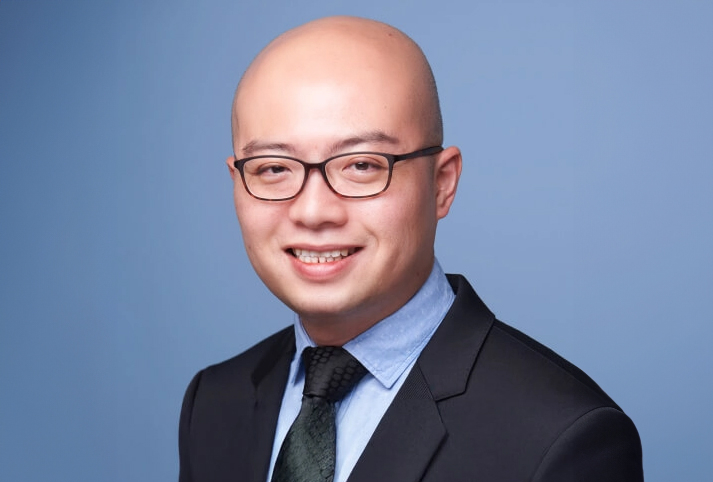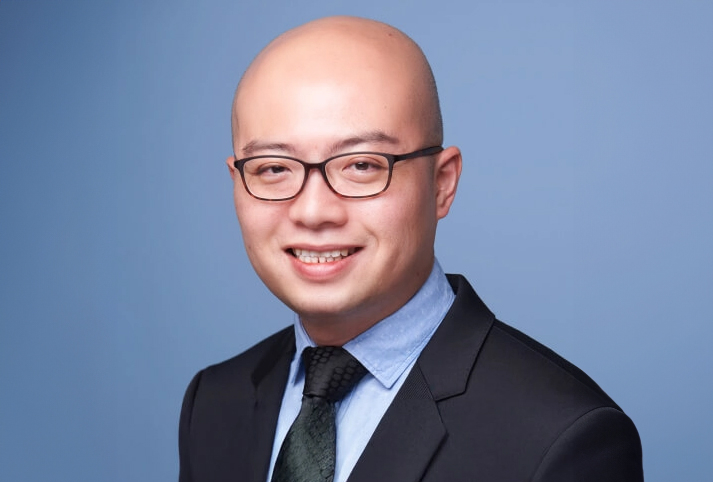ACL Repair Surgery

Dr James Tan
Senior Consultant Knee Surgeon
Orthopaedic Surgery, Sports & Exercise Medicine
MBBS (S’pore), MRCS (Edinburgh), MMed (Orthopaedics), FRCS Orthopaedics & Trauma (Edinburgh)
The anterior cruciate ligament (ACL) is one of the key ligaments that stabilize the knee joint. It connects the thigh bone (femur) to the shin bone (tibia) and helps prevent the tibia from sliding forward. An ACL injury is a common sports-related knee injury and can result in pain, swelling, and a feeling of instability, especially during activities that involve sudden stops, pivots, or jumps.
While ACL reconstruction has long been the standard surgical treatment, certain cases may be treated with ACL repair surgery. This procedure focuses on preserving the patient’s original ligament by repairing it rather than replacing it with a graft.
Understanding ACL Injuries
The ACL is most often injured during high-impact or pivoting activities. Common scenarios include:
- Sudden stops or changes in direction during sports like football, basketball, or soccer
- Jumping and landing awkwardly
- Direct impact to the knee, such as in contact sports or accidents
- Hyperextension of the knee
Symptoms of an ACL injury can include:
- A popping sound or sensation at the time of injury
- Rapid swelling within a few hours
- Knee pain and tenderness
- Instability or a feeling that the knee is “giving way”
- Difficulty resuming sports or even basic movements in severe cases
A thorough medical evaluation, including an MRI scan, is typically required to confirm the diagnosis and determine whether ACL repair is an option.
What is ACL Repair Surgery?
ACL repair surgery involves reattaching the torn ligament to the bone using sutures or other fixation devices. This technique preserves the patient’s natural ligament rather than replacing it with a tendon graft, as done in ACL reconstruction.
ACL repair is suitable for specific types of ACL injuries, including:
- Proximal tears, where the ligament tears away from its attachment on the thigh bone
- Partial tears where the remaining ligament tissue is strong and healthy
- Situations where preserving the native ligament offers better long-term function
Advantages of ACL Repair Surgery
ACL repair offers several potential benefits for selected patients:
- Preserves the natural ligament and its nerve endings, which may enhance proprioception (joint awareness)
- Smaller incisions and less invasive than traditional reconstruction
- No need for tendon harvesting, which reduces pain and recovery time at the donor site
- Potentially quicker initial rehabilitation compared to reconstruction
- May be suitable for young or less active patients with specific tear patterns
It is important to note that ACL repair is not suitable for all types of ACL tears, and long-term outcomes are still being studied compared to traditional reconstruction.
Preparing for ACL Repair Surgery
Before surgery, a comprehensive assessment ensures that the patient is an appropriate candidate for ACL repair. Pre-operative preparation typically includes:
- Physical examination and imaging tests, such as MRI, to confirm the tear type and location
- Review of medical history and previous knee injuries
- Discussion of surgical options and expected recovery timeline
- Pre-surgery physiotherapy (prehab) to strengthen muscles and optimize range of motion
How ACL Repair Surgery is Performed
ACL repair is usually performed as an arthroscopic (keyhole) procedure, which minimizes tissue damage and speeds recovery.
The general steps include:
- Anaesthesia: The patient receives regional or general anesthesia for comfort
- Arthroscopic Access: Small incisions are made around the knee to insert a camera and surgical instruments
- Ligament Evaluation: The surgeon inspects the ACL and confirms that repair is possible
- Ligament Reattachment: The torn ACL is sutured and reattached to the bone, often using anchors or screws for secure fixation
- Internal Bracing (if used): A supportive fiber tape may be added to reinforce the repair during the healing phase
- Closure: The incisions are closed with sutures or surgical tape, and a bandage or brace is applied
Recovery and Rehabilitation
Recovery from ACL repair surgery depends on the tear type, the patient’s age, and adherence to rehabilitation.
Immediate Post-Surgery
- Patients may go home the same day
- Crutches and a knee brace are often recommended initially
- Icing and elevation help reduce swelling and discomfort
Rehabilitation
- Early physiotherapy focuses on restoring range of motion and reducing stiffness
- Strengthening exercises for the quadriceps and hamstrings are introduced gradually
- Full weight-bearing is typically allowed within a few weeks, as guided by the surgeon
Return to Activities
- Light activities: 4–6 weeks
- Jogging: 8–12 weeks
- Sports or high-impact activities: 6–9 months, depending on healing and physiotherapy progress
A structured rehabilitation plan is essential to achieve optimal outcomes and prevent re-injury.
Risks and Considerations
As with any surgical procedure, ACL repair has potential risks and limitations:
- Risk of re-tear, particularly in high-demand athletes
- Knee stiffness or reduced range of motion
- Infection, bleeding, or blood clots (rare)
- Need for revision surgery if the repair does not heal properly
Choosing an experienced orthopaedic surgeon and following all postoperative instructions greatly reduces these risks.
Life After ACL Repair
Most patients regain stable knee function and return to daily activities within a few months. To maintain knee health and reduce the risk of future injury:
- Commit to completing the full physiotherapy program
- Avoid high-impact activities until cleared by the surgeon
- Strengthen surrounding muscles and maintain overall fitness
- Wear supportive footwear during sports or training
Early treatment, careful rehabilitation, and adherence to medical advice are key to long-term success after ACL repair.
FAQs About ACL Repair Surgery
ACL repair preserves and reattaches the original ligament, while ACL reconstruction replaces the torn ligament with a graft. Repair is suitable only for specific tear types, whereas reconstruction is the standard for most complete tears.
Patients with proximal tears, partial tears, or healthy remaining ligament tissue are the best candidates. Complete mid-ligament tears typically require reconstruction instead.
Initial recovery may be quicker than reconstruction, with return to daily activities in a few weeks. Full return to sports can take 6 to 9 months, depending on rehabilitation progress.
If the repair heals successfully, it can provide long-lasting knee stability. However, the risk of re-injury is slightly higher compared to ACL reconstruction, especially in high-impact sports.
Yes, there is a risk that the repaired ligament may not heal properly or could re-tear. Strict adherence to physiotherapy and activity restrictions during recovery reduces this risk.

Dr James Tan is a skilled orthopaedic surgeon specialising in knee injuries, including cartilage and meniscus surgeries. Dr Tan is a graduate of the National University of Singapore and a fellow of The Royal College of Surgeons in Edinburgh. He has also received specialist training at the Department of Sports Orthopaedics, Technical University of Munich. With extensive experience treating athletes from Singapore's national teams and professional leagues, Dr Tan is committed to achieving optimal outcomes for his patients.

Camden Medical
1 Orchard Boulevard, #09-06, Singapore 248649
Mount Alvernia Hospital
820 Thomson Road, Medical Centre D #05-60, Singapore 574623
Contact Information
Tel : 8028 4572
Mobile : 8028 4572
Whatsapp : 8028 4572
Email : hello@quantumortho.com.sg
Operating Hours
Monday-Friday : 8:30am - 5:30pm
Saturday : 8:30am - 12:30pm
Sunday & Public Holiday : Closed
